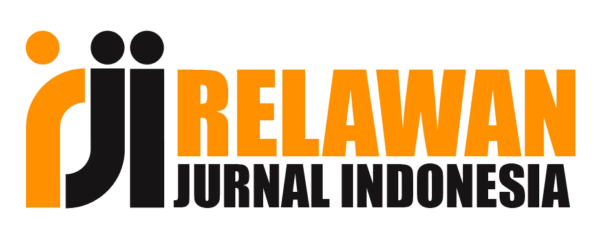Development of physics learning media "delight physics web" on elasticity and hooke's law to increase student learning motivation
Abstract
Keywords
Full Text:
PDFReferences
Alakurt, T., & Bardakci, S. (2017). Seeing google through the eyes of Turkish academicians. Turkish Online Journal of Distance Education, 18(3), 105-119.
Arumdani, A., Wasito, B. & M. Sabandi. (2018). Pengaruh pemanfaatan situs google sebagai sumber belajar dan motivasi belajar terhadap prestasi belajar pada mata pelajaran ekonomi kelas XI di SMA Negeri 3 Surakarta. Jurnal Pendidikan Bisnis dan Ekonomi, 4(2), 1–17.
Aulia, D., Kaspul, K., & Riefani, M. K. (2021). Google site as a learning media in the 21st century on the protists consept. BIO-INOVED: Jurnal Biologi-Inovasi Pendidikan, 3(3), 173-178.
Dwijayani, N. M. (2019). Development of circle learning media to improve student learning outcomes. In Journal of Physics: Conference Series (Vol. 1321, No. 2, p. 022099). IOP Publishing.
Fitra, J., & Maksum, H. (2021). Efektivitas Media Pembelajaran Interaktif dengan Aplikasi Powntoon pada Mata Pelajaran Bimbingan TIK. Jurnal Pedagogi Dan Pembelajaran, 4(1), 1-13.
Hawkridge, D. (2022). New information technology in education. Taylor & Francis.
Karuku, S. (2023). Systematic Literature Review: Analysis of the Use of Website-Based Physics Learning Devices to Support Students' Abilities in Learning Physics in High Schools. Journal Evaluation in Education (JEE), 4(3), 80-87.
Lai, Z., Cui, Y., Zhao, T., & Wu, Q. (2022). Design of Three-Dimensional Virtual Simulation Experiment Platform for Integrated Circuit Course. Electronics, 11(9), 1437.
Latifah, S. (2016). Pengembangan lembar kerja peserta didik (LKPD) berorientasi nilai-nilai agama Islam melalui pendekatan inkuiri terbimbing pada materi suhu dan kalor. Jurnal Ilmiah Pendidikan Fisika Al-Biruni, 5(1), 43-51.
Nurzaman, R. F. R., Yuningsih, E. K., Agustina, R. D., Zakwandi, R., Dirgantara, Y., & Kuntadi, D. (2021, April). An optical instrument worksheet in physics class. In Journal of Physics: Conference Series (Vol. 1869, No. 1, p. 012169). IOP Publishing.
Setyosari, H. P. (2016). Metode penelitian pendidikan & pengembangan. Prenada Media.
Wulandari, B., & Surjono, H. D. (2013). Pengaruh problem-based learning terhadap hasil belajar ditinjau dari motivasi belajar PLC di SMK. Jurnal pendidikan vokasi, 3(2). 178-191.
Zaharah, Z. & Susilowati, A. (2020). Meningkatkan motivasi belajar peserta didik dengan menggunakan media modul elektronik di era revolusi industri 4.0. BIO, 6(2), 145–158.
DOI: https://doi.org/10.17509/wapfi.v8i2.54067
Refbacks
- There are currently no refbacks.
Copyright (c) 2023 Universitas Pendidikan Indonesia (UPI)

This work is licensed under a Creative Commons Attribution-ShareAlike 4.0 International License.
The Journal Wahana Pendidikan Fisika http://ejournal.upi.edu/index.php/WapFi/ is licensed under a Creative Commons Attribution-ShareAlike 4.0 International License
The Journal WaPFi (Wahana Pendidikan Fisika).
All rights reserverd. pISSN 2338-1027 eISSN 2685-4414
Copyright © Faculty of Mathematics and Science Education (FPMIPA) Universitas Pendidikan Indonesia (UPI)










